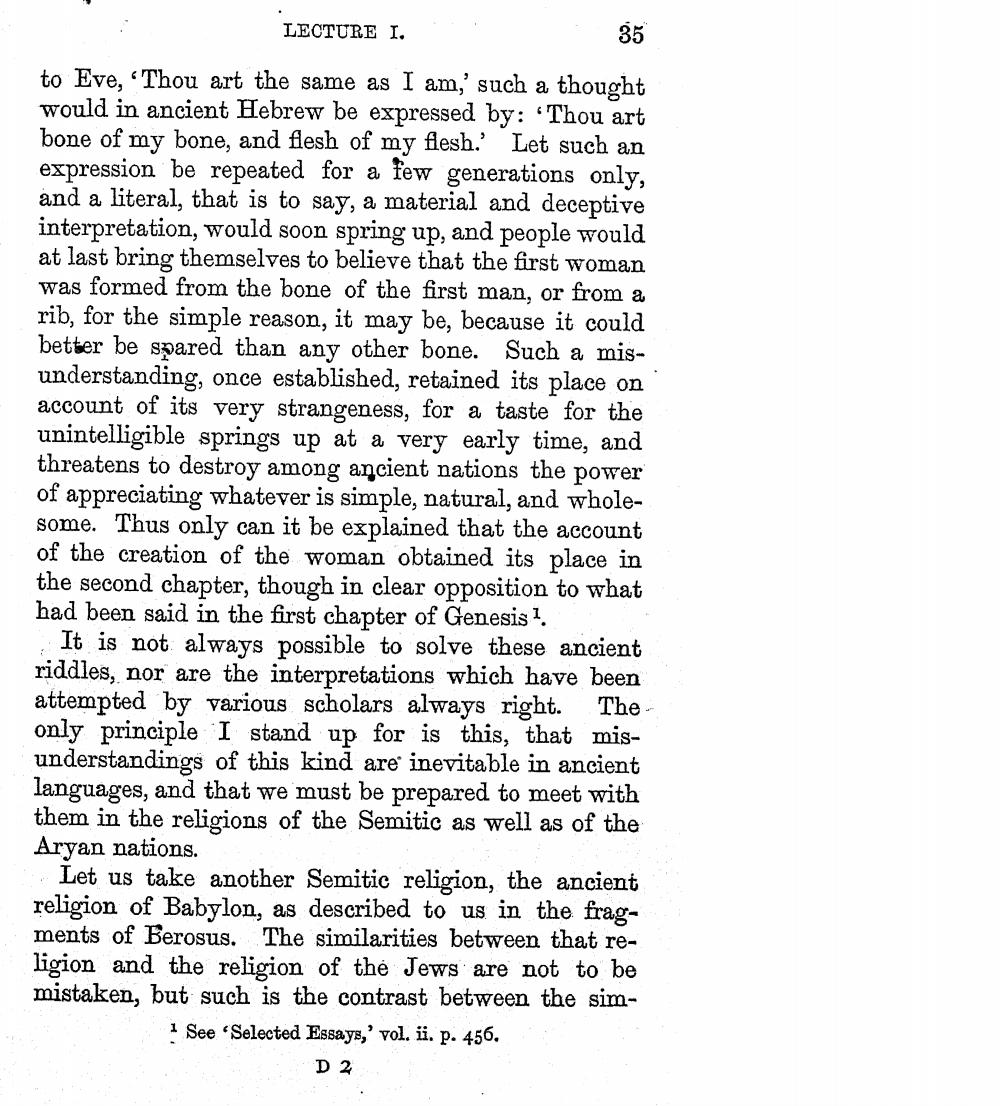________________
LECTURE I.
to Eve, 'Thou art the same as I am,' such a thought would in ancient Hebrew be expressed by: 'Thou art bone of my bone, and flesh of my flesh.' Let such an expression be repeated for a few generations only, and a literal, that is to say, a material and deceptive interpretation, would soon spring up, and people would at last bring themselves to believe that the first woman was formed from the bone of the first man, or from a rib, for the simple reason, it may be, because it could better be spared than any other bone. Such a misunderstanding, once established, retained its place on account of its very strangeness, for a taste for the unintelligible springs up at a very early time, and threatens to destroy among ancient nations the power of appreciating whatever is simple, natural, and wholesome. Thus only can it be explained that the account of the creation of the woman obtained its place in the second chapter, though in clear opposition to what had been said in the first chapter of Genesis 1.
35
It is not always possible to solve these ancient riddles, nor are the interpretations which have been attempted by various scholars always right. The only principle I stand up for is this, that misunderstandings of this kind are inevitable in ancient languages, and that we must be prepared to meet with them in the religions of the Semitic as well as of the Aryan nations.
Let us take another Semitic religion, the ancient religion of Babylon, as described to us in the fragments of Berosus. The similarities between that religion and the religion of the Jews are not to be mistaken, but such is the contrast between the sim1 See 'Selected Essays,' vol. ii. p. 456.
D 2




